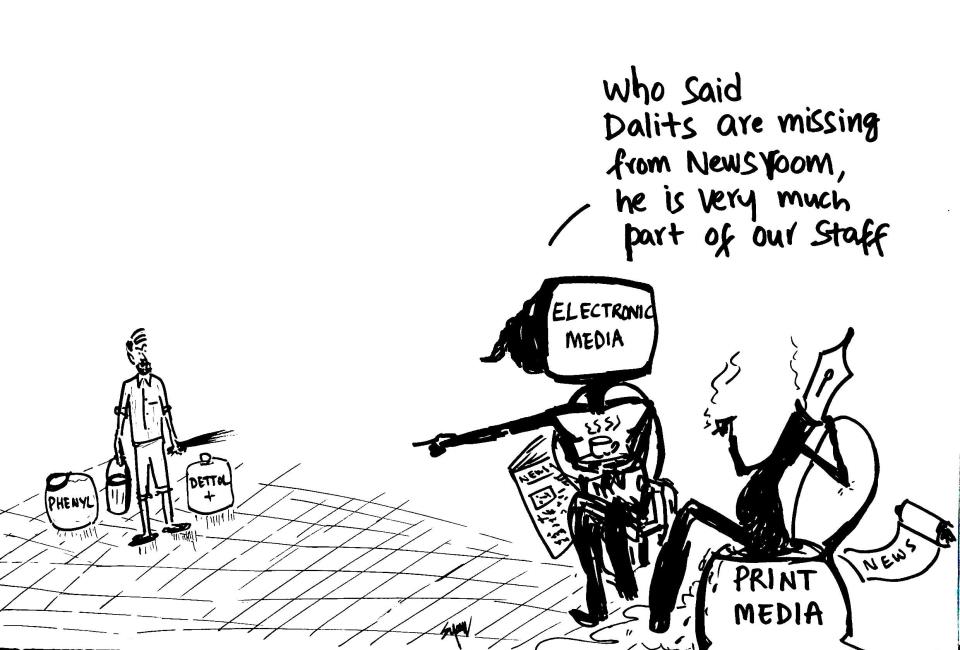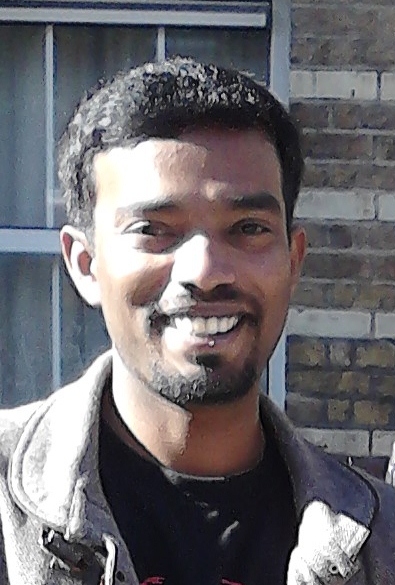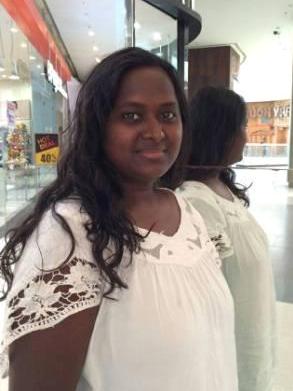Arvind Bouddh
Is India really a hindu-majority country? And is Hinduism really a religion? You may wonder why I am even asking such questions when they are already well established facts (wait, not facts but notions). Well, for you these are not notions but facts, for a person like me whose identity has always been in oblivion, these are enforced concepts that have been fed to us by academia, media, government, art, literature and cinema of this country which are invariably upper castes dominated spaces.
One of the founders of sociology, Emile Durkheim, defined religion as1:
“Unified system of beliefs and practices related to sacred things, that is to say, things set apart and forbidden – beliefs and practices which unite into one single moral community”
The important elements of the definition are 1) distinction between sacred and profane 2) beliefs and practices and 3) all these giving a community feeling to its followers.
Let us see if this is what so called Hindu religion has.
On the criterion of sacred and profane, we can say that the hindu system of beliefs fulfills this criterion as there is a set of rules for purity and pollution, although most of them are not just confined to ‘things’ but are related to fellow human beings.
On the second criterion, the system of beliefs and practices, we have to see how well the hindu-system fulfills this criterion. Here I am also taking up the first question about the hindu majority of this country.
Hindu system has so many variations and contradictions that it can’t be established that they follow the same set of belief systems. Brahmins of north see non-vegetarian food with disgust (some may eat but only by observing Tuesday, Monday or Saturday as non-veg holidays) while the Brahmins of East and South eat non-veg food with both hands. Such are the contradictions in the food culture. It is just an example, you can find many on your own. When it comes to rituals and deities the criterion is completely unfulfilled. Whom they like to call as hindus are not the hindus in any sense. In India most of the people are still living in the villages (about 70 percent of people reside in villages). Let us see who their deities are and what are the rituals that they follow.
Deities and Rituals
Hindu belief system starts with Brahma, Vishnu and Mahesh as the main gods who are responsible for creation, maintenance and destruction of the universe. But majority of village dwellers do not believe in these gods. Except uppercaste kshatriyas and Brahmins majority of village people have their own kul-devtas and devis (family gods and goddesses). These kul devtas have their own stories of origin. They have their own special rituals, the bhogs (offerings) to these kul-devatas also are very specific. And the priests performing the special poojas to these deities are also well versed in pleasing them with mantras, sacrifices and bhogs etc., but these priests are invariably among bahujans themselves.
Kancha Illaiah Shepherd2 asks:
What is the relationship between the Hindu Gods and ourselves? Did the Hindu brahminical Gods treat us as part of their people, or even as legitimate devotees? Why did Hinduism create the images of many Gods as against the universal ethic of monotheism? Did brahminical polytheism work in the interest of Dalitbahujan masses or did it work in the interest of brahminical forces who are a small minority? Further, what is the relationship between the Dailtbahujan Goddesses and Gods and the Hindus? Did the Hindus respect these deities or worship them? What are the socioeconomic and cultural forms of the Dalitbahujan Goddesses and Gods? Since the majority of the people relate to the Dalitbahujan Goddesses and Gods, isn’t there a need to present their narratives?
In answer to these questions, he explains how the hindu system is anti dalit-bahujan altogether.
In villages, people worship their deities on various occasions, treat them as family members. One of the beautiful things that I observed in my kul-devtas is the diversity. I am not saying the deities do not have hierarchies and patriarchy entrenched in them but let me explain what this diversity means.
In my native place (my village is a single caste village all have the same deities, only ahurt, balak and suhagils would differ) some of the deities that I can name are:
1. Lalman Baba: Who takes care of cattle and belongs to my caste-Jatav. He takes offering of madira (alcohol) and eats pure ghee delicacies only. If you don’t have pure ghee delicacies, he is fine with a bottle of alcohol and coconut. He rides a horse and married a gujri against social norms. As he had love marriage, he is my most favorite character
2. Mewati Pathan: He is a muslim. Eats chicken and meat but there should be no alcohol near him. He likes ganja chilam. He mainly protects family from bad souls.
3. Saiyyad baba: He is also a muslim and is vegetarian. He is happy with a little bit of rewari of sugars (candies of til with sugar) and a chaddar. Mewati can also be offered a chaddar.
4. Gond baba: He likes ganja chilam and bears white clothes. That is how he is imagined. The name might be coming from the tribe Gond.
5. Asamani (sky) mata: A goddess who takes sacrifices of goat or chicken. She drinks as well. A dangerous character if she gets angry.
6. Chaumukhi Kalika: Four mouthed goddess who accompanies Lalman Baba. Takes sacrifices and drinks happily.
7. Ahurt and Balaks: They are deceased family members. The old ones are ahurts and ones who died young are balaks.
8. Suhagils: They are women who died before their husbands. They will only torture women members if they get angry.
These are the deities that one has to stick to so that the family’s wellbeing is ensured. When one forgets or neglects them they get angry and aggravate the disease or create other problems.
So you can see the diversity here. The muslim deities are as loved as the other family gods. They all are faceless beings. There is no image of them. Placing two bricks in the /\ form can make their temple. There is no problem if a child releases him/herself on their temples while playing on them. I mean they won’t get angry. You can just clean the place like we clean other places. The prasads that is offered to them is completely consumed by the community and family members, priests only come into the picture if one deity is highly angry else we ourselves can please them with these offerings.
The patriarchal system is there among gods and goddesses. Mostly, devtas are depicted more powerful than matas. The menstruating women are denied to cook the delicacies for pooja-bhogs. The temples of matas are smaller one besides male deity whom she accompanies. There is depiction of the social structure that we live in. All in all the system is not perfect. But they are diverse and non-brahminical. They are also democratic to an extent.
So the question is, can we call these people hindus? As there are whole lot of people (SCs, STs and OBCs who make about 85 percent of Indian population) in the Indian villages who practice this kind of belief system, are they really hindu in any way?
So how did this happen? Despite the majority of population following the non-hindu, non brahminical system of belief, how did this country came to be seen as a hindu majority country?
The answer lies in the first paragraph. The upper caste savarna academia, media, government, cinema, art and literature did not leave any stone unturned to portray the majority of dalit-bahujans as hindus. The so called founder of Indian sociology, Govind Sadashiv Ghurye, called Indian Tribes as backward hindus3. Do you think a non-Brahmin can ever make such a sweeping statement and still enjoy the status of being called founder of Indian sociology? If you read Indian sociology you will find that it is nothing but savarnas’ dream and eulogy for hindu system majorly.
But they have made their careers out of such eulogies and appropriations. The same continues in every arena.
Other ways to establish India as a hindu majority are the government surveys where a surveyor simply put Hindu in the column of religion as he/she gets a hindi name. They can’t imagine that one could be a non-hindu with Hindi name because the notion has been so strongly fit into our minds. I can remember how my parents had to make the changes to the surveys saying we did not belong to Hinduism while the column was filled without even asking our religion. The looks on the surveyors are weird and not comforting while they have to make the changes. The illiterate-helpless people who have a completely different belief system do not know how to define their identity. They don’t know if they can give themselves some other term than hindus, so it is easier to identify them according to your wish. If you remember the childhood days, you will see how the savarna friends fought if there is something wrong with the name, like there is one ‘singh’ missing or spelling of surname is different (e.g. kushwah for OBC Kushwaha for Gen). The education system, media, markets and television serials and movies do the remaining work of strengthening the notion that India is a hindu majority and we get to read/hear this claim. Some even go on dreaming to declare India a hindu country legally (India will be a Hindu nation by 2020, world by 2030: VHP leader Ashok Singhal).4
I hope now you got why I asked: Is India really a hindu majority country?
We left the second question halfway. We dwelled into the first two criteria let us look into the third criterion about the common feeling. It is most important aspect of religion because it tries to give one a social identity of cohesion and sense of belongingness. People who are called as hindus, do they have a feeling of belonging to a close knit community? Hindu system starts with the division of people into four groups. And then there is caste which again divides these four groups. Where is cohesion here? The untouchability, strict endogamies, and the concept of purity of pollution etc., divide the people to such a extent that a vast chunk of them were forced to live outside the human settlements. Most of these communities are still living in inhuman conditions. The caste atrocities on SCs and STs are rampant. The social, economic and cultural exploitation of these communities is an ingredient of hindu system. Again, where is cohesion here?
Hope now both the questions that I asked make some sense to you. My own answers are, India is not a hindu majority and Hinduism is not a religion. If at all, Hinduism, which is nothing but caste system is a system of division of laborers graded over one another based on birth as Babasaheb calls it.5
~
Notes
[1] The Elementary Forms of Religious Life. Emile Durkheim
[2] Why I am not Hindu, Kancha Illaiah Shepherd
[3] Castes and Races in India, GS Ghurye
[4] http://indianexpress.com/article/india/india-others/by-2020-india-will-be-hindu-nation-world-by-2030-ashok-singhal/ visited on 6 July 2016
[5] Annihilation of Caste, Dr BR Ambedkar
~~~
Arvind Bouddh, a graduate from IIT Bombay, is preparing for the Civil Services exams.. He is an egalitarian.









